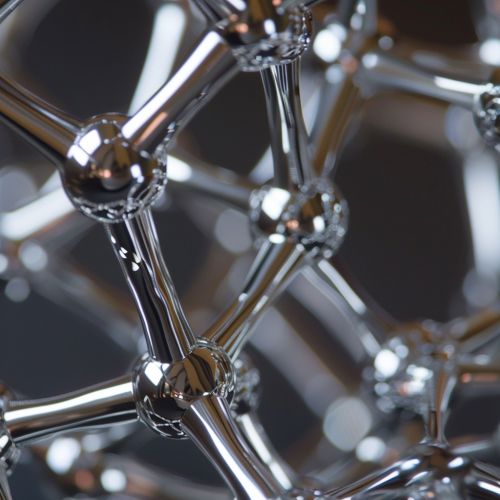Chromene
Overview
Chromenes are a class of organic compounds that are formally derived from chromane by replacing one hydrogen atom of a methylene group with a double bond. They are a subclass of the larger family of heterocyclic compounds known as benzopyrans, which also include coumarins and flavones. Chromenes are characterized by a fused six-membered benzene ring and a five-membered heterocyclic ring, with an oxygen atom at the 1-position of the heterocyclic ring.


Structure and Nomenclature
The core structure of chromenes consists of a benzene ring fused to a pyran ring. The term "chromene" itself is derived from "chroma" (color) and "ene" (indicating the presence of a double bond), reflecting the fact that many chromene derivatives are brightly colored. The systematic name for chromenes according to the rules of the IUPAC is "benzopyran". However, the term "chromene" is more commonly used in scientific literature.
Synthesis
There are several methods for the synthesis of chromenes, many of which involve the cyclization of suitable precursors. One of the most common methods is the Pechmann condensation, which involves the reaction of phenols with β-keto esters in the presence of an acid catalyst. Other methods include the Baker-Venkataraman rearrangement, the Perkin reaction, and the Wittig reaction. In addition, chromenes can be synthesized from salicylaldehydes via the Alder-ene reaction.
Properties and Reactivity
Chromenes are generally stable compounds, but they can undergo a variety of chemical reactions due to the presence of the double bond and the heteroatom. For example, they can participate in Diels-Alder reactions as dienophiles, and they can undergo electrophilic aromatic substitution reactions at the benzene ring. In addition, the oxygen atom in the pyran ring can act as a nucleophile, leading to the formation of various oxygen-containing derivatives.
Applications
Chromenes have a wide range of applications in various fields. In organic chemistry, they are used as building blocks for the synthesis of more complex molecules. In medicinal chemistry, many chromene derivatives have been found to possess biological activity, and some have been developed into drugs. For example, warfarin, a widely used anticoagulant, is a derivative of chromene. In dye chemistry, chromenes are used as precursors for the synthesis of various dyes due to their bright colors.
Biological Significance
Many chromene derivatives are naturally occurring compounds with significant biological activity. For example, flavones, a subclass of chromenes, are widely distributed in the plant kingdom and have been found to possess antioxidant, anti-inflammatory, and anticancer properties. Coumarins, another subclass of chromenes, are also found in many plants and have been used in traditional medicine for their anticoagulant and antimicrobial properties.
